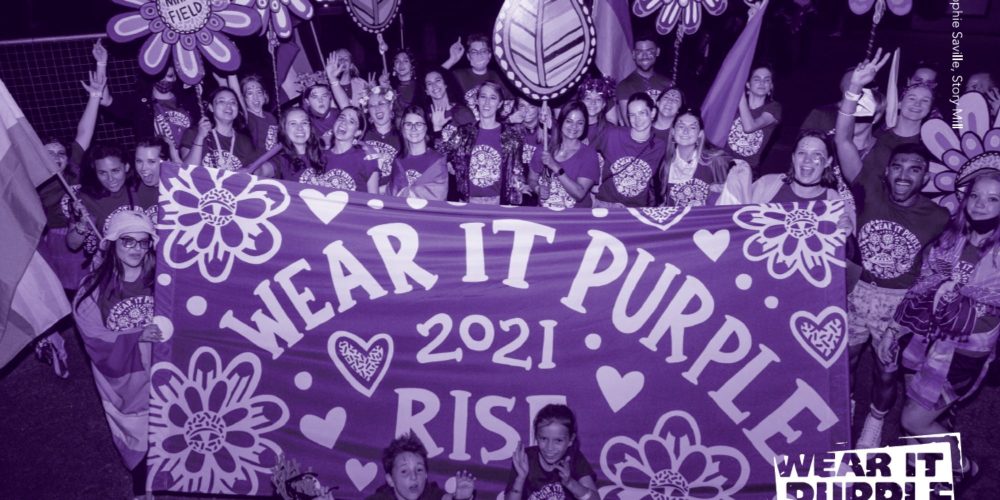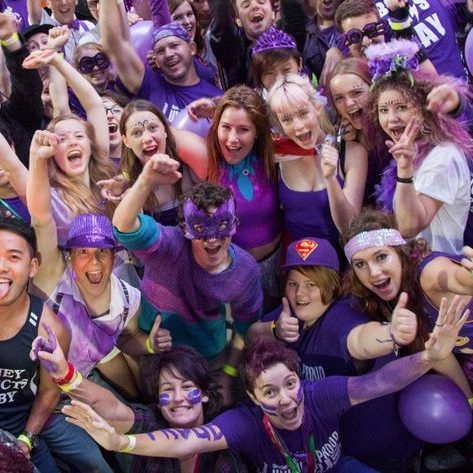 In a world that embraces diversity and celebrates individuality, Wear It Purple Day stands as a powerful reminder of the importance of acceptance, inclusivity, and understanding for all members of the LGBTQI+ community.
In a world that embraces diversity and celebrates individuality, Wear It Purple Day stands as a powerful reminder of the importance of acceptance, inclusivity, and understanding for all members of the LGBTQI+ community.
This annual observance, typically held on the last Friday of August, aims to raise awareness about the challenges faced by queer youth and to create a supportive environment that empowers them to express themselves authentically.
Origins of Wear It Purple Day:
Wear It Purple Day originated in Australia in 2010, in response to the unfortunate outcomes of LGBTQ+ bullying and discrimination. The founders, Katherine Hudson and Scott Williams, were deeply affected by the tragic suicides of young people due to anti-LGBTQ+ sentiments. They believed that a simple yet impactful gesture like wearing purple could bring attention to these issues and send a message of support to LGBTQ+ individuals, particularly the younger generation.
The Symbolism of Purple:
Purple was chosen as the official colour for Wear It Purple Day because of its historical significance within the LGBTQ+ community. The colour purple has long been associated with LGBTQI+ activism, and it’s a blend of pink and blue, traditionally linked to gender stereotypes. By adopting purple, Wear It Purple Day emphasizes breaking down these gender norms and promoting an inclusive and diverse understanding of identity.
Promoting Acceptance and Inclusivity:
Wear It Purple Day provides a platform for individuals and communities to visibly show their support for LGBTQI+ rights and equality. It’s a day to wear purple clothing, accessories, or even a purple ribbon to signify solidarity. Beyond the visual aspect, the day encourages open conversations about LGBTQI+ issues, creating safe spaces for people to share their experiences, struggles, and aspirations.
Educational institutions, workplaces, and community organizations often participate in Wear It Purple Day by organizing events such as workshops, panel discussions, and awareness campaigns. These activities are designed not only to foster understanding among peers but also to educate and raise awareness about the unique challenges faced by LGBTQI+ youth, including higher rates of mental health issues and homelessness due to family rejection.
Supporting LGBTQ+ Youth:
One of the primary focuses of Wear It Purple Day is the well-being of LGBTQI+ youth. By creating an environment that accepts and celebrates diverse identities, this observance helps reduce the feelings of isolation and alienation that many young people experience. It sends a clear message to LGBTQI+ youth that they are not alone, and that there are people and resources available to support them.
For educators and parents, Wear It Purple Day is an opportunity to initiate conversations about diversity, inclusion, and acceptance. By addressing these topics openly, we can challenge stereotypes and prejudices and provide young people with the tools to become more empathetic and understanding individuals.
Looking Forward:
As Wear It Purple Day continues to gain recognition and support worldwide, its impact goes beyond a single day of wearing purple. It serves as a reminder that our society is strongest when it is diverse and inclusive, and it encourages ongoing efforts to create safe and welcoming spaces for all individuals, regardless of their sexual orientation, gender identity, or expression.
In a world that still grapples with LGBTQI+ discrimination, Wear It Purple Day stands as a beacon of hope, demonstrating that progress can be made through education, awareness, and genuine compassion. By wearing purple on this day, we not only honour the struggles of LGBTQI+ individuals but also reaffirm our commitment to building a more equitable and accepting world for everyone.


